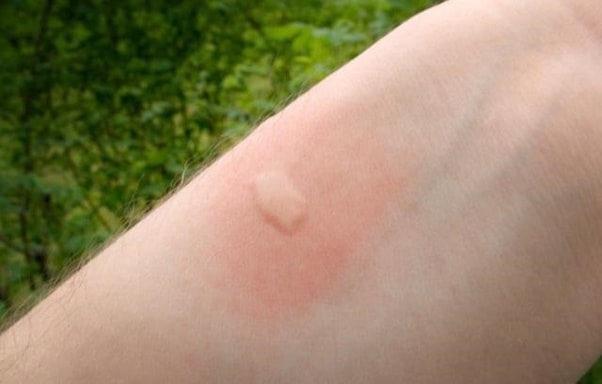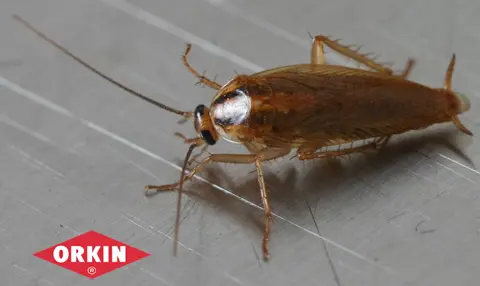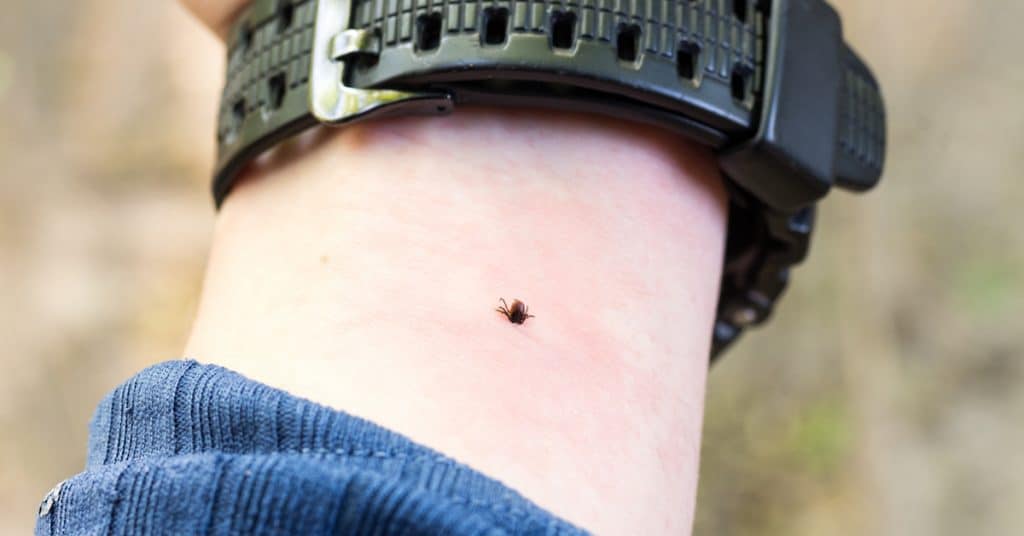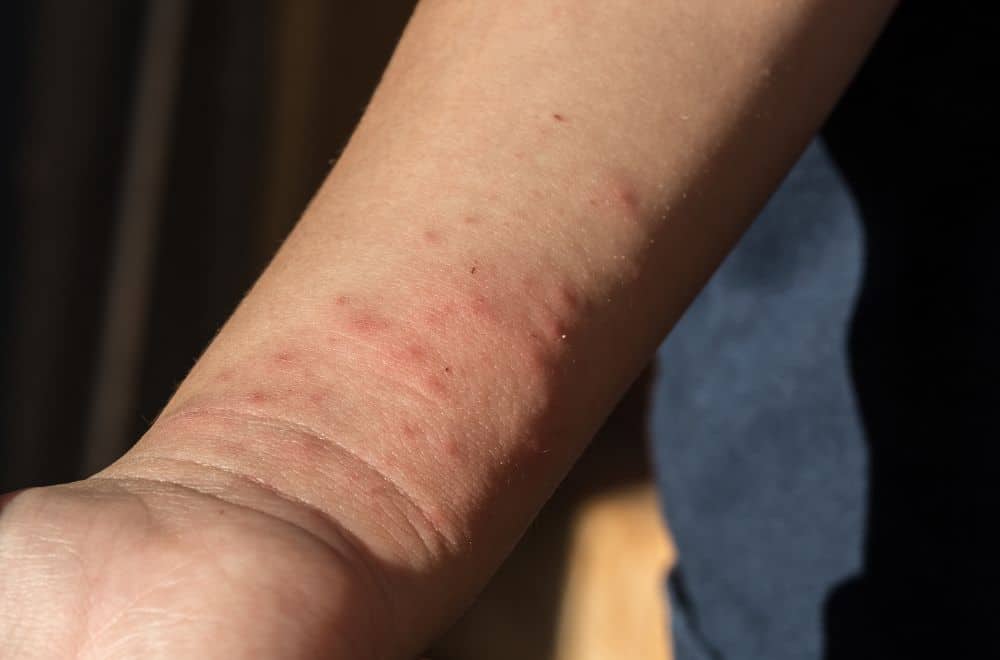Lots of insects prefer to hunt at night because most of the other creatures are asleep. This means bug predators are less likely to attack and bug prey are too vulnerable to fight back. It’s also a lot easier to access a stationary target that doesn’t know you’re there because it’s sleeping. But what bugs bite at night besides bedbugs? Let’s explore a few common insects.
What Bugs Bite at Night Besides Bed Bugs?
1. Mosquitoes

Image Credit: cdc.gov
You probably know mosquitoes spread potentially fatal diseases like malaria, dengue, and zika. But did you know more than 3,000 mosquito species exist? Not all of them carry the pathogens that cause diseases, but all their females bite. This is because female mosquitoes need blood to lay eggs while male mosquitoes mostly feed on nectar and other plant juices.
Also, not all mosquitoes hunt at night. But the ones that suck human blood find it easier and safer to attack us at night, using carbon dioxide and body heat to track us. They hide during the day since they’re easily dehydrated in daylight. A non-infectious bite leaves an itchy red swelling that shrinks into a blister when you scratch it. The bump disappears in a few days.
If the mosquito that bit you was a disease-bearing species, you may develop a fever and will need to see a doctor. But even if it was a benign mosquito, the bite is still annoying and it can still hurt. Avoid getting bitten by draining and spraying any stagnant water sources where mosquitoes lay eggs. Use bug screens, bug zappers, and mosquito nets to protect your bed.
2. Midges
The word ‘midge’ is like the word ‘fly’ because when you hear it, a specific bug pops into your mind. But scientifically speaking, these two are generic names for hundreds of bug species. A few examples of midges include no-see-ums, sand flies, and moose flies. So when we think of bugs that bite at night besides bedbugs, we’re focused on biting midge species in particular.
They’re called biting midges to distinguish them from their non-biting cousins, better known as blind mosquitoes. Both biting and non-biting midges resemble mosquitoes, but the ‘blind’ ones feed on waste from sewers, septic tanks, and fertilizers. Like mosquitoes, male biting midges eat nectar while females bite us for blood. The bites swell more than mosquitoes.
This is because biting midges are smaller than mosquitoes but are more likely to trigger allergic reactions. Their microscopic red larvae are called bloodworms. They prefer coastal areas, and you can manage them by draining still water deposits or adding oil and soap to kill their eggs in puddles. You can also spray targeted pesticides in spots where they hang out.
3. Spiders

Image Credit: burkemuseum
A lot of us are scared of spiders, but most of them are harmless. Some species can even be beneficial because they trap and eat other pests like cockroaches, mosquitoes, and snails. But many people believe the rumors about swallowing spiders in their sleep. (For the record, it’s not a proven scientific fact, just an urban legend). That said, some spiders do bite at night.
These spiders aren’t targeting you. It’s more likely they were pursuing other bugs that bite at night, like mosquitoes or gnats. Then maybe you reflexively swatted your arms in your sleep and startled the spider, which then bit you in self-defense. This type of bite is unlikely to be toxic. You might not even notice it unless the silk woke you and you went into panic mode.
More often, you wake up the next day with a few traces of webs on your bed and an itchy bump. Some spider bites are lethal, but these spiders rarely come into the house or bite at night. You’ll only meet them if you go hiking or exploring in the jungles and caves where they live. For household spiders, just remove their webs and kill the other pests that they feed on.
4. Scabies
Lots of people see scabies as some kind of skin infection or allergic reaction because it looks like hormone-induced eczema, fungal ringworm, or some other skin rash. But scabies comes from scabies mites – tiny eight-legged bugs that are related to ticks and lice. They dig into your skin to feed and lay eggs, leaving patchy skin lesions that get extra itchy in the dark.
Scabies mites live in skin folds (e.g. your breast and bum creases), under fingernails, and even below your rings and watches. Their eggs hatch in 3 or 4 days then the adult mites move back to the skin and resume their lifecycle, which is why they spread so fast. They mostly jump from skin to skin during close intimate contact e.g. breastfeeding or between lovers.
Although eggs hatch quickly, it can take almost two months for the rash to appear because it’s an allergic reaction to the accumulation of saliva, feces, and eggs from the mites. The itch is worse at night because your skin is warmer and more reactive. You need medicated creams and lotions, and you’ll have to wash all your clothes and bedding in very hot water.
5. Cockroaches

Image Credit: orkin
First, let’s get one thing clear. Yes, you might wake up in the middle of the night, feel a tickle or a pinch of your skin, spot a cockroach, and scream thinking the disgusting thing just bit you. *shudder* But it wasn’t trying to sink its teeth into your skin. It was just scraping off the crumbs or dead cells that were scattered on your body. Good reason to shower before bed!
Even better, avoid eating in the bedroom, because those bits of food are like sirens to nearby roaches. These insects are most active at night and they multiply at alarming rates. They can also live a long time without food. They can even live a week without a head! So once a roach enters your bedroom, it could lay in wait for weeks until your next midnight snack.
A cockroach ‘bite’ appears as a rash on your skin. It looks like a bedbug bite or mosquito bite, but it’s bigger. Antihistamines and ointments will soothe any itching, but what you want is to eviscerate the little buggers. Clean thoroughly to remove all traces of food and moisture, use baited traps, and call an exterminator to fumigate the bedroom (plus the rest of the house!)
6. Head Lice
Lice are interesting creatures, and they’re largely misunderstood. For one thing, their diets are extremely specific. Dog lice can’t bite cats, and bird lice can’t bite mammals. Similarly, head lice can’t bite your body, and pubic lice (aka crabs) are restricted to your genitals. Let’s focus on head lice because they mostly bite at night. The bites don’t hurt, but they itch a lot!
Head lice also don’t spread diseases, but because they’re so irritating, you may scratch your skin hard enough to turn sores into open wounds that could get infected. And they’re quite contagious so anyone sharing a bed, towels, clothes, or combs with you is likely to get bitten. Head lice spread faster in school kids because they interact more and mess up their hair a lot.
Options for getting rid of head lice include careful combing with olive oil or coconut oil which loosens the latching of the lice. You can also use medicated shampoos and ointments. It’s not necessary to skip school or work since the attack isn’t that harmful, but it may be advisable … just so you don’t spread the lice to others. But remember, head lice don’t mean you’re dirty!
7. Ticks and Fleas

Image Credit: fastmed
Ticks and fleas aren’t pests that typically target humans. But if you live with farm animals or domestic pets, these bugs may cross over, particularly if you love to snuggle your furry friends or if they routinely sleep in your bed. Ticks are mites, so they have eight legs and a soft, puffy body. Conversely, fleas are insects with six legs and a flattened body. Both spread diseases.
Ticks tend to be solitary, so you’ll only find one or two at a time. But fleas are quite prolific and can go from five to five hundred in just a few months! Fleas and ticks suck blood, but they don’t have wings. They can’t move very far and rely on cats, dogs, birds, and cattle to get them around. That’s why they only bite humans at night when we can’t get up and escape.
The best way to get rid of ticks and fleas is by using pesticides. In animals, these can be added to shampoos or injected by the vet. But humans can’t take a flea bath so it’s best to call a pest control expert who will fumigate the bedroom and all infested items. You can then treat your pets or livestock to make sure they don’t attract any more ticks or flies into your household.
8. Chiggers
While their names have similar spelling, jiggers and chiggers are completely different creatures. Jiggers are fleas that dig into your bare feet and cause terrifying blisters that have to be sliced out. *shudder* But chiggers, sometimes called berry bugs, are bright red mites with eight legs and bloated bodies. When they bite, they liquefy your cells and suck the goop.
Chiggers are most active late in the afternoon and will bite you if you bump into them while hiking or strolling. They’re really small, so despite their blaring skin tone, you need a large magnifying glass to see them. But their bites itch more at night so you might not notice the wound until you get into bed. The bites resemble a series of bumps, blisters, or skin rashes.
You’ll mostly find them on your lower legs or your waist because the chiggers spring from tall grass and marshes. To get rid of these bugs, take a hot shower with lots of soap and wash any clothes or bedding in hot water. You can apply ointments and antihistamines on the bites to soothe the itching and avoid scratching since you might break your skin and cause infection.
Did we forget any bugs that bite at night besides bedbugs? Name some in the comments!
